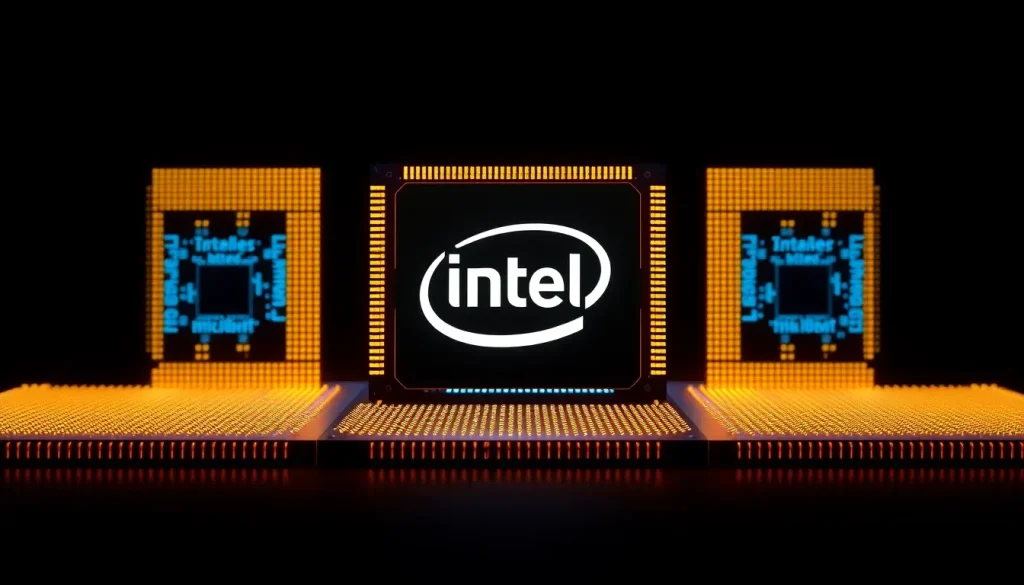Intel announces Panther Lake CPU launch date and 18A mass production

Intel is making strides in the semiconductor industry, showcasing its innovations and production capabilities. As the tech giant prepares for the release of its Panther Lake CPUs, significant developments are set to unfold. With the introduction of its Intel 18A manufacturing process, Intel aims to reclaim its position at the forefront of technology. This article delves into the details surrounding these developments, the expectations for Panther Lake, and what it means for Intel's future.
Intel confirms wafer production for Intel 18A in 2025 and 2026
Earlier this week, Intel solidified its commitment to its new manufacturing process by confirming specific production timelines for its Intel 18A technology. Not only has Intel announced the official presentation date for Panther Lake, but it also laid to rest rumors surrounding its production capabilities, which some speculated to be below 40%. Such claims have been firmly dismissed as Intel is currently ramping up production of its 18A wafers at its Fab 52 facility in Ocotillo, Arizona.
The significance of the Intel 18A process extends beyond just being another technological milestone; it represents the first American node to reach the 2nm class. This innovation incorporates advanced technologies such as PowerVia and RibbonFET, which contribute to improved performance and efficiency. Key benefits include:
- 15% more performance per watt compared to previous generations.
- 30% increased density compared to Intel 3 technology.
- Enhanced routing efficiency, reducing congestion.
- Higher operating frequencies and improved overall efficiency.
Intel has also invested an impressive $32 billion in its Arizona expansion, focusing on both Fab 52 and the upcoming Fab 62. This investment is critical for scaling production, with projections indicating:
- 1,000 to 5,000 wafers monthly by the end of this year.
- Growth to 15,000 wafers monthly by 2026.
- A peak capacity of 30,000 wafers monthly in subsequent years.
This aggressive expansion places Intel in direct competition with TSMC, which has already begun producing chips at 4nm and is preparing for even smaller nodes, signaling a major shift in the landscape of semiconductor manufacturing.
What to expect from Intel Panther Lake
Intel Panther Lake is more than just a new CPU architecture; it represents a significant evolution in Intel’s product offerings. Scheduled to be unveiled on October 9, this architecture will utilize the cutting-edge Intel 18A manufacturing process and is expected to be the flagship product for 2025.
Additionally, Intel has another project in the works: Clearwater Forest, a CPU designed specifically for server applications, also set to be produced using Intel 18A technology. Clearwater Forest is anticipated to launch in the first half of 2026, demonstrating Intel's commitment to expanding its product line across various market segments.
Breakthrough technologies: Foveros Direct and more
One of the exciting innovations accompanying the Panther Lake release is Foveros Direct, the next generation of 3D packaging technology. This new approach will complement Intel's existing EMIB and traditional Foveros technologies, providing a more flexible and cost-effective alternative to TSMC's CoWoS, which is designed for large interposers used in GPUs and accelerators.
Foveros Direct is expected to enhance the performance and integration of multi-chip architectures by allowing more efficient interconnection between chips, which is vital for high-performance computing and advanced applications.
Will Panther Lake be the game changer for Intel?
The upcoming launch of Panther Lake on October 9 signifies a pivotal moment for Intel. This unveiling is not just a product release; it is a statement of intent that highlights Intel's ambition to reclaim its position as a leader in semiconductor technology. With the introduction of Intel 18A and the advancements in chip design, the expectations are high.
However, the question remains: will these innovations translate into a competitive edge over rivals like AMD and TSMC? The upcoming months will be critical for Intel as it seeks to regain momentum after a challenging period marked by delays and increased competition.
As we approach the unveiling, the industry watches closely. Will Intel's promises materialize into tangible benefits for consumers and businesses alike? The anticipation builds, and all eyes will be on Intel as it aims to turn the tide in a fiercely competitive landscape.
For an overview of Intel's innovations and expectations surrounding Panther Lake, check out this video:
The broader context: Intel's roadmap and challenges
Intel's recent announcements come as part of a broader strategy to enhance its manufacturing capabilities and technological leadership. The company has been investing heavily in its R&D and production facilities to not only catch up with competitors but to innovate at a pace that meets the evolving demands of the semiconductor market.
Challenges remain, particularly in maintaining quality and yield rates as they push the limits of technology with smaller nodes. Intel has faced scrutiny in the past regarding delays in product launches and production issues, but with robust investments and commitments to new technologies, the hope is that these hurdles can be overcome.




Leave a Reply